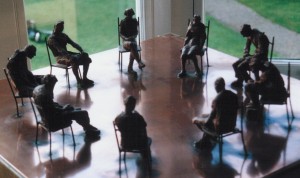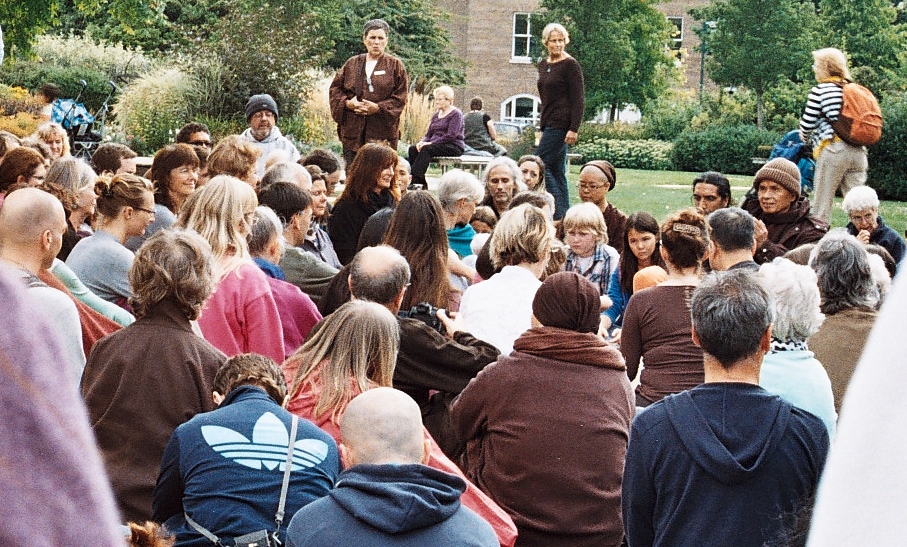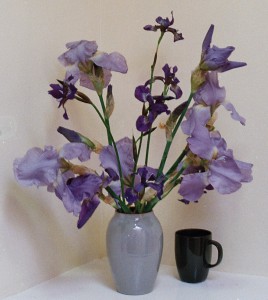We all have people we find difficult. Mine include a next door neighbour who’s views about gardening differ vastly from my own; most of our political leaders; my parent-in-law; (from time to time) my spouse; all cold callers on the telephone; I could go on … I’m sure you can rapidly come up with your own list.
One of the lessons I once came away from an SGI discussion meeting with was ‘that difficult person could be your best friend’. I pinned the phrase by my telephone for some time, to help me deal pleasantly with the cold callers.
The idea is not so much that I will become best buddies with the cold caller, but that in responding to the difficult person I have the chance to grow. Believing that we all (including myself and whichever difficult person is bothering me just now) have an ‘inner buddha nature’, if I can allow my inner buddha nature to respond to their inner buddha nature we will both feel better after our encounter and I will have watered positive seeds in myself. It remains a challenge every time. I still want to be clever/cruel and score points over the cold caller. It helps considerably if I treat the telephone ring as a bell of mindfulness and take three breaths before answering. If I allow my inner buddha nature to respond to their inner buddha nature I benefit so much from the opportunity that I become thankful to them for the chance to grow and they are my ‘best friend’ because they have given me this opportunity. With a person that I meet frequently there will be multiple opportunities of this type. (Quakers reading this should feel free to substitute the phrase ‘answering that of God in everyone’ for ‘ my inner buddha nature responding to their inner buddha nature’.)
Another Buddhist practice that has helped me considerably in relating to difficult people is metta (loving-kindness) mediation. This encourages us to send metta to specific people (ourself, a loved one, a neutral person and a difficult person) and then broaden this out to include all people and all sentient beings. For a while I practised this weekly with family members and we all found it helpful, especially in relating to particular difficult people in our lives. We would take turns to read the sections of the guided meditation, leaving silence between each section. Currently this practice has lapsed, maybe we’ll revive it some time. I’ll reproduce here the wording we use. Do use it as is or adapt it to your liking (or totally ignore it …).
Start by thinking of yourself, your body and mind.
Think of yourself as someone that you love. Wish yourself well in every way.
Flood your body – particularly any areas that are suffering – with thoughts of love and compassion.
As you breth in, fill your mind with thoughts of peace,
And as you breath out, think of letting go of stress and tension.
‘May I be well and happy, and may my mind be at peace.’
Now think of someone that you love.
Think of them, and send them your love and compassion, wishing them well .
‘May they be well and happy, and may their minds be at peace.’
Now think of someone that you know but do not know well.
Think of them, and send them your love and compassion, wishing them well .
‘May they be well and happy, and may their minds be at peace.’
Now think of someone you hate or resent.
Think of them, and send them your love and compassion, wishing them well .
‘May they be well and happy, and may their minds be at peace.’
Now think of yourself, your friend, the neutral person and the difficult person.
See all four of you together, and wish all four people well. Try to do this equally for all four of your, and notice any tendency to ‘play favourites’ by wishing your friend more happiness than the others.
May they be well and happy, and may their minds be at peace.’
Now spread your well-wishing out in wider and wider circles, until you are wishing that all sentient beings are well and happy, and their minds are at peace.
‘May all beings be well and happy
May they know joy and peace, love and compassion.
May any merit gained from this practice be shared with them, with all suffering beings’.
And remember with gratitude ‘I am one of those beings’.
With thanks to Jim Pym ‘You don’t have to sit on the floor’ and www.wildmind.org/metta/







